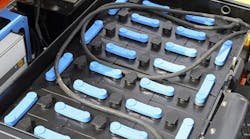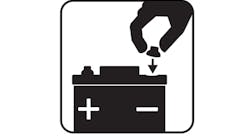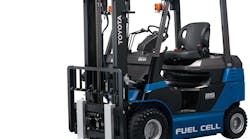Companies invest billions of dollars every year to purchase motive power sources, such as forklifts, to keep their businesses running smoothly. Most of these motive power sources are powered by lead acid batteries. One of the best ways to protect this investment is through proper battery management.
Unfortunately, lift truck users and operators often overlook proper battery maintenance. Proper battery maintenance not only increases the life of the battery, but also can help maintain the battery's maximum capacity.
Battery Life and Performance
Several key factors impact battery life and performance. These include heat and cold, charging practices, specific gravity, workload and proper maintenance.
Routine Maintenance
Following a regular maintenance routine can help to avoid battery damage. Check with your battery manufacturer for specific battery care instructions. Only those personnel properly trained in the maintenance of lead acid batteries should be allowed to install, operate and maintain them.
Daily
• Connect the battery to an approved, automatic starter.
• Open the battery cover and/or lift truck hood to ventilate. Turn charger off prior to disconnecting the battery to prevent arcs and sparks.
Weekly
• Check water levels in all cells and level off when needed. Watering should be done while the battery is gassing or at the end of a charge cycle. Fill to a level approximately ¼” below the bottom of the vent well.
• Provide an equalize charge to properly mix the electrolyte and water.
Monthly
• Take a specific gravity reading on all cells with a hydrometer after charge.
• Inspect cable leads and connector for fraying, loose connectors or burned and pitted contact areas.
• Wipe down the top of the battery with a neutralizing cleaning agent such as battery neutralizing solution.
Charging
In addition to regular maintenance, it is also important to make sure the battery charger is properly sized to the battery. If a charger is too small, sulfation of the positive plates can occur. Over discharge of the battery also can occur and this will dissolve the negative plate. A charger that is too large can cause shedding and burning of the positive plates, shortening battery life.
Brian Faust is general manager of Douglas Battery, a brand of EnerSys, a provider of stored energy solutions for industrial applications.




